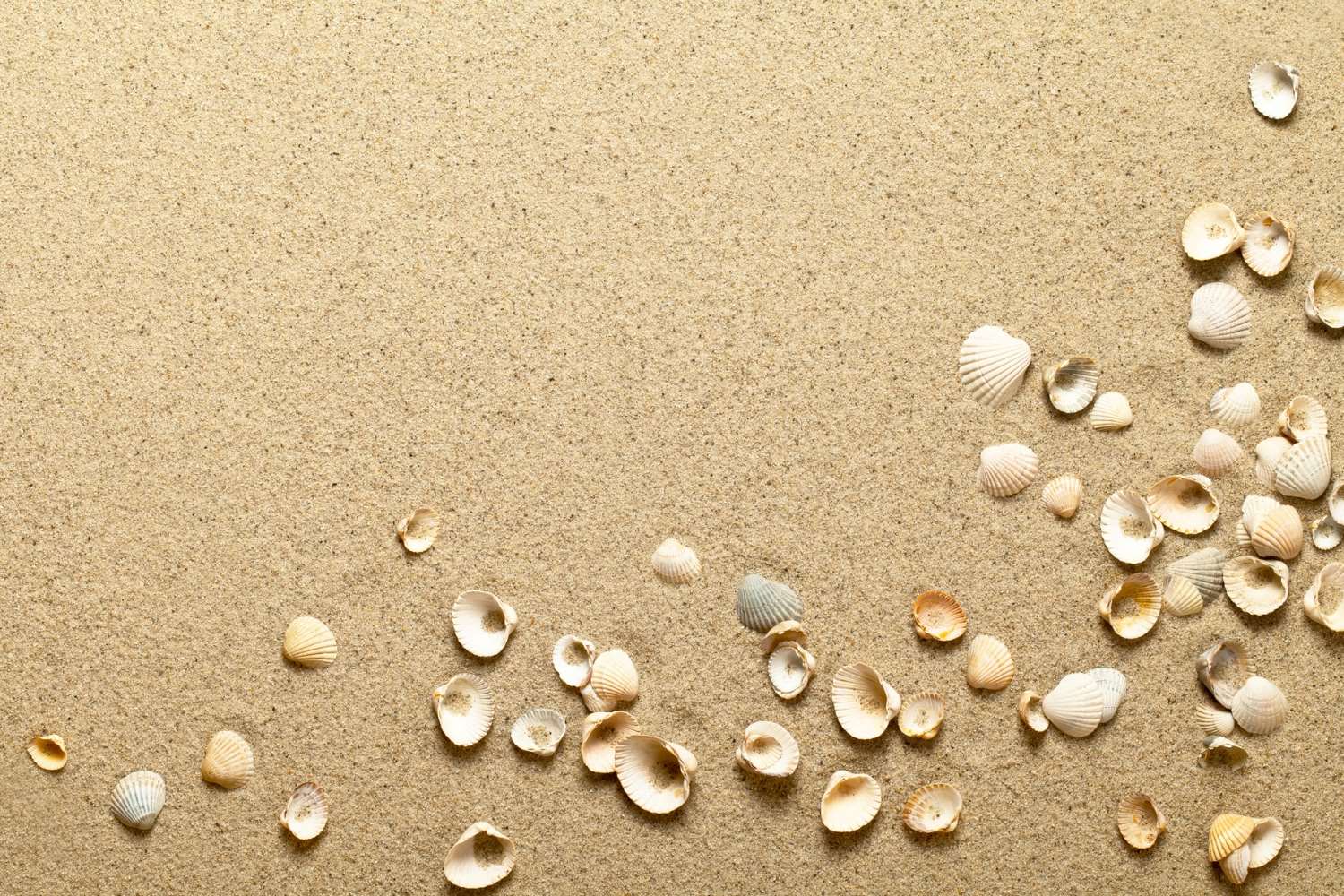Home>Science>The Surprising Factor That Determines The Color Of Beach Sand


Science
The Surprising Factor That Determines The Color Of Beach Sand
Published: January 18, 2024
Discover the science behind the color of beach sand and the surprising factor that influences it. Uncover the secrets of nature's artistry.
(Many of the links in this article redirect to a specific reviewed product. Your purchase of these products through affiliate links helps to generate commission for Noodls.com, at no extra cost. Learn more)
Table of Contents
Introduction
Beach sand, with its myriad hues ranging from pristine white to golden brown and even striking black, holds a captivating allure for beachgoers worldwide. The color of beach sand is not merely a product of chance or whimsy; rather, it is a result of intricate natural processes and environmental factors. Understanding the underlying determinants of beach sand color unveils the fascinating interplay of geological, chemical, and biological forces that shape the coastal landscapes we cherish.
The variance in beach sand color is a testament to the diverse and dynamic nature of our planet's shorelines. From the turquoise waters of the Caribbean to the rugged coastlines of the Pacific Northwest, each beach's sand color tells a unique story of its geological origins and environmental influences. Delving into the factors that contribute to this captivating diversity unravels the hidden complexities that underpin the seemingly simple pleasure of strolling along the shore.
The allure of beach sand color lies not only in its aesthetic appeal but also in its role as a silent narrator of the Earth's history. By examining the factors that determine the color of beach sand, we gain a deeper appreciation for the intricate web of processes that have shaped our coastlines over millennia. From the influence of mineral composition to the impact of erosion and biological activity, the color of beach sand serves as a canvas that reflects the intricate interplay of natural forces.
As we embark on this exploration of the surprising factor that determines the color of beach sand, we will uncover the hidden marvels that lie beneath our feet. By delving into the realms of geology, chemistry, and biology, we will unravel the captivating tale of how the humble grains of sand carry within them the echoes of the Earth's ancient past and the ongoing processes that continue to shape our coastal landscapes.
Factors Affecting Beach Sand Color
The color of beach sand is influenced by a myriad of factors that collectively contribute to the rich tapestry of hues found along coastlines worldwide. From the mineral composition of the sand grains to the effects of erosion and the role of biological activity, these factors converge to shape the captivating array of colors that adorn our beaches.
The mineral composition of beach sand plays a pivotal role in determining its color. For instance, beaches with powdery white sand often boast a high concentration of quartz, a mineral renowned for its crystalline transparency and light-reflecting properties. In contrast, beaches with darker sands, such as those with a rich golden or even black hue, typically contain higher proportions of heavier minerals like magnetite, ilmenite, or volcanic basalt. These minerals imbue the sand with deeper, more intense colors, creating a striking visual contrast against the backdrop of the sea.
Erosion, both natural and anthropogenic, also exerts a profound influence on the color of beach sand. As waves relentlessly sculpt the coastline, they gradually wear down rocks and minerals, shaping the sand grains in the process. This continual abrasion can lead to the enrichment of certain minerals in the sand, altering its color profile. Furthermore, human activities, such as construction and mining, can introduce foreign substances into coastal environments, potentially tinting the sand with unnatural hues.
Biological activity, particularly the presence of microorganisms and organic matter, can also contribute to the coloration of beach sand. In some coastal regions, microorganisms like foraminifera and diatoms leave behind colorful remnants as they perish, adding a subtle tint to the sand. Additionally, the accumulation of decaying organic matter, such as seaweed and algae, can impart a distinct hue to the sand, particularly in intertidal zones where these materials accumulate.
The interplay of these factors, alongside the broader geological and environmental context, ultimately determines the unique color palette of each beach. By unraveling the intricate web of influences that govern beach sand color, we gain a deeper appreciation for the natural processes that shape our coastal landscapes, transforming them into vibrant tapestries of color and texture.
The Role of Minerals in Determining Sand Color
The mineral composition of beach sand stands as a defining factor in shaping its captivating array of colors. Each grain of sand, with its unique blend of minerals, contributes to the distinctive hues that adorn coastlines worldwide. One of the most striking examples of this phenomenon is the powdery white sands found in many tropical locales. These pristine beaches owe their dazzling appearance to the prevalence of quartz, a mineral renowned for its crystalline transparency and light-reflecting properties. The high concentration of quartz in these sands results in their luminous, almost ethereal, appearance, as they scatter and refract sunlight to create a glistening, white expanse.
In contrast, beaches with darker sands, such as those boasting a rich golden or even black hue, typically harbor higher proportions of heavier minerals. These may include magnetite, ilmenite, or volcanic basalt, which imbue the sand with deeper, more intense colors. The presence of these minerals creates a stunning visual contrast against the backdrop of the sea, adding a sense of drama and mystique to the coastal landscape.
The mineralogical diversity of beach sands is a testament to the complex geological history of each region. Over millennia, geological processes have shaped and weathered rocks, gradually breaking them down into the myriad grains that compose beach sand. As these rocks undergo erosion, their constituent minerals are liberated and transported by rivers, currents, and waves, eventually settling on the shore to form the sands we tread upon. The interplay of geological forces, including volcanic activity, tectonic movements, and weathering, contributes to the rich assortment of minerals found in beach sand, each leaving its indelible mark on the coastal scenery.
Moreover, the presence of rare or unique minerals can infuse beach sands with extraordinary colors, transforming them into veritable natural wonders. For instance, the striking green sands of Papakolea Beach in Hawaii owe their distinctive color to the high concentration of olivine, a mineral formed from volcanic activity. This rare phenomenon exemplifies how the mineral composition of beach sand can yield breathtaking and unexpected hues, adding an element of wonder and enchantment to the coastal landscape.
In essence, the role of minerals in determining sand color is a testament to the intricate and captivating interplay of geological forces that have shaped our planet's coastlines. By understanding the profound influence of mineral composition on beach sand color, we gain a deeper appreciation for the natural processes that have transformed these coastal landscapes into vibrant tapestries of color and texture.
The Influence of Erosion on Sand Color
Erosion, both natural and anthropogenic, plays a pivotal role in shaping the color profile of beach sand. As waves relentlessly sculpt the coastline, they gradually wear down rocks and minerals, shaping the sand grains in the process. This continual abrasion can lead to the enrichment of certain minerals in the sand, altering its color profile. Over time, the relentless action of waves and currents serves as a natural artist, refining and reshaping the grains of sand into a mesmerizing spectrum of colors.
Natural erosion, driven by the ceaseless forces of wind and water, gradually breaks down rocks into smaller particles, liberating a diverse array of minerals that contribute to the sand's color palette. For instance, the gradual weathering of iron-rich minerals can impart a reddish or orange hue to the sand, creating striking contrasts against the azure backdrop of the sea. Similarly, the erosion of volcanic rocks can release minerals such as basalt, contributing to the formation of beaches with dark, almost black sands.
Anthropogenic activities, including construction and mining, can also significantly impact the color of beach sand. The extraction of minerals and aggregates from coastal regions can introduce foreign substances into the environment, potentially tinting the sand with unnatural hues. Furthermore, the construction of coastal infrastructure, such as harbors and jetties, can disrupt natural sediment transport processes, leading to alterations in beach composition and coloration.
In addition to mineral enrichment, erosion can also lead to the breakdown of organic matter, contributing to the color profile of beach sand. Decaying organic materials, such as seaweed and algae, can impart a distinct hue to the sand, particularly in intertidal zones where these materials accumulate. The interplay of biological activity and erosion further enriches the color diversity of beach sands, adding layers of complexity to their visual appeal.
Ultimately, the influence of erosion on sand color is a testament to the dynamic and ever-changing nature of coastal landscapes. As natural and human-induced forces continue to shape our shores, the color palette of beach sand serves as a visual chronicle of the intricate processes that have molded these coastal environments over time. By unraveling the influence of erosion on sand color, we gain a deeper appreciation for the captivating interplay of geological, environmental, and anthropogenic factors that converge to create the vibrant tapestries of color found along our coastlines.
The Impact of Biological Activity on Sand Color
Biological activity exerts a remarkable influence on the coloration of beach sand, adding a layer of complexity to the vibrant tapestry of hues found along coastlines worldwide. Microorganisms, organic matter, and the intricate web of marine life contribute to the subtle and sometimes striking variations in sand color, enriching the coastal landscape with their organic imprint.
One of the most intriguing manifestations of biological activity on sand color is the presence of colorful microorganisms. For example, in certain coastal regions, microscopic organisms like foraminifera and diatoms leave behind colorful remnants as they perish, subtly tinting the sand with hues ranging from pale pink to vibrant green. These remnants, composed of calcium carbonate and silica, contribute to the delicate pastel shades that adorn select beaches, adding a touch of natural artistry to the coastal scenery. The accumulation of these remnants, often referred to as "biogenic sand," serves as a testament to the intricate interplay between marine life and the color palette of beach sand.
Moreover, the accumulation of decaying organic matter, such as seaweed, algae, and other marine debris, can significantly impact the color profile of beach sand. In intertidal zones, where organic materials accumulate, the sand may bear subtle tints of brown or green, reflecting the presence of decomposing marine flora. This organic influence on sand color not only adds visual diversity to the coastal landscape but also underscores the dynamic relationship between biological processes and the formation of beach sands.
The intricate dance of biological activity and sediment dynamics further enriches the color diversity of beach sands, creating a visual symphony that reflects the intricate web of life along the coast. As marine organisms interact with sediments and organic matter, they leave behind subtle traces that contribute to the captivating array of colors found on beaches worldwide. This interplay between biological activity and sand color serves as a testament to the profound influence of marine life on the coastal environment, adding an element of wonder and enchantment to the natural tapestry of colors that adorn our shores.
In essence, the impact of biological activity on sand color is a testament to the intricate interplay between marine life and the formation of beach sands. By unraveling the subtle yet profound influence of biological processes on sand color, we gain a deeper appreciation for the dynamic and multifaceted nature of coastal ecosystems, where the organic imprint of marine life converges with geological and environmental forces to create the vibrant and diverse palette of colors that adorn our coastal landscapes.
Read more: How To Determine The Color That Makes Peach
Conclusion
The color of beach sand, a seemingly simple aspect of coastal landscapes, unfolds as a captivating tapestry woven from the intricate interplay of geological, environmental, and biological forces. From the dazzling white sands of tropical paradises to the dramatic black and golden beaches found in volcanic regions, the vibrant hues that adorn our coastlines serve as a testament to the rich diversity and dynamic nature of our planet's shores.
The mineral composition of beach sand stands as a defining factor in shaping its captivating array of colors. The prevalence of minerals such as quartz, magnetite, and volcanic basalt imbues the sand with an astonishing spectrum of hues, reflecting the geological history and environmental influences that have shaped each coastal locale. The role of minerals in determining sand color unveils the profound influence of geological forces, transforming coastlines into vibrant canvases that bear the echoes of Earth's ancient past.
Erosion, both natural and anthropogenic, emerges as a pivotal force that sculpts the color profile of beach sand. The continual abrasion of rocks and minerals by waves and currents enriches the sand with diverse mineral deposits, contributing to the enchanting variations in color found along our shores. The influence of erosion on sand color serves as a visual chronicle of the dynamic and ever-changing nature of coastal landscapes, where natural and human-induced forces converge to shape the captivating tapestries of color that adorn our coastlines.
Biological activity adds a layer of complexity to the vibrant tapestry of hues found along coastlines worldwide. The subtle traces left by microorganisms and the organic imprint of marine life contribute to the delicate and sometimes striking variations in sand color, enriching the coastal landscape with their organic artistry. The impact of biological activity on sand color underscores the dynamic relationship between marine life and the formation of beach sands, adding an element of wonder and enchantment to the natural tapestry of colors that adorn our shores.
In essence, the surprising factor that determines the color of beach sand unveils the hidden marvels that lie beneath our feet. By delving into the realms of geology, chemistry, and biology, we unravel the captivating tale of how the humble grains of sand carry within them the echoes of the Earth's ancient past and the ongoing processes that continue to shape our coastal landscapes. The color of beach sand, far from being a mere aesthetic feature, serves as a silent narrator of the Earth's history, offering a glimpse into the intricate web of processes that have shaped our coastlines over millennia.














